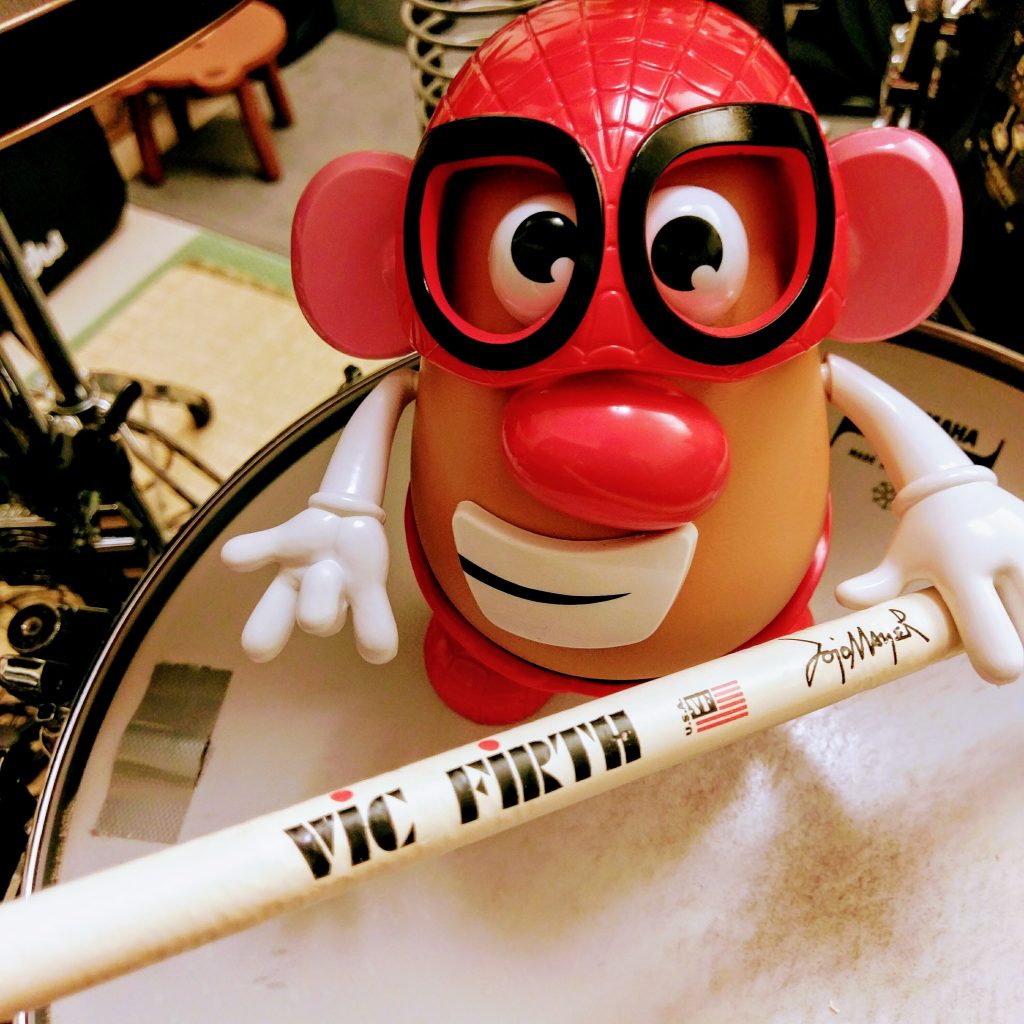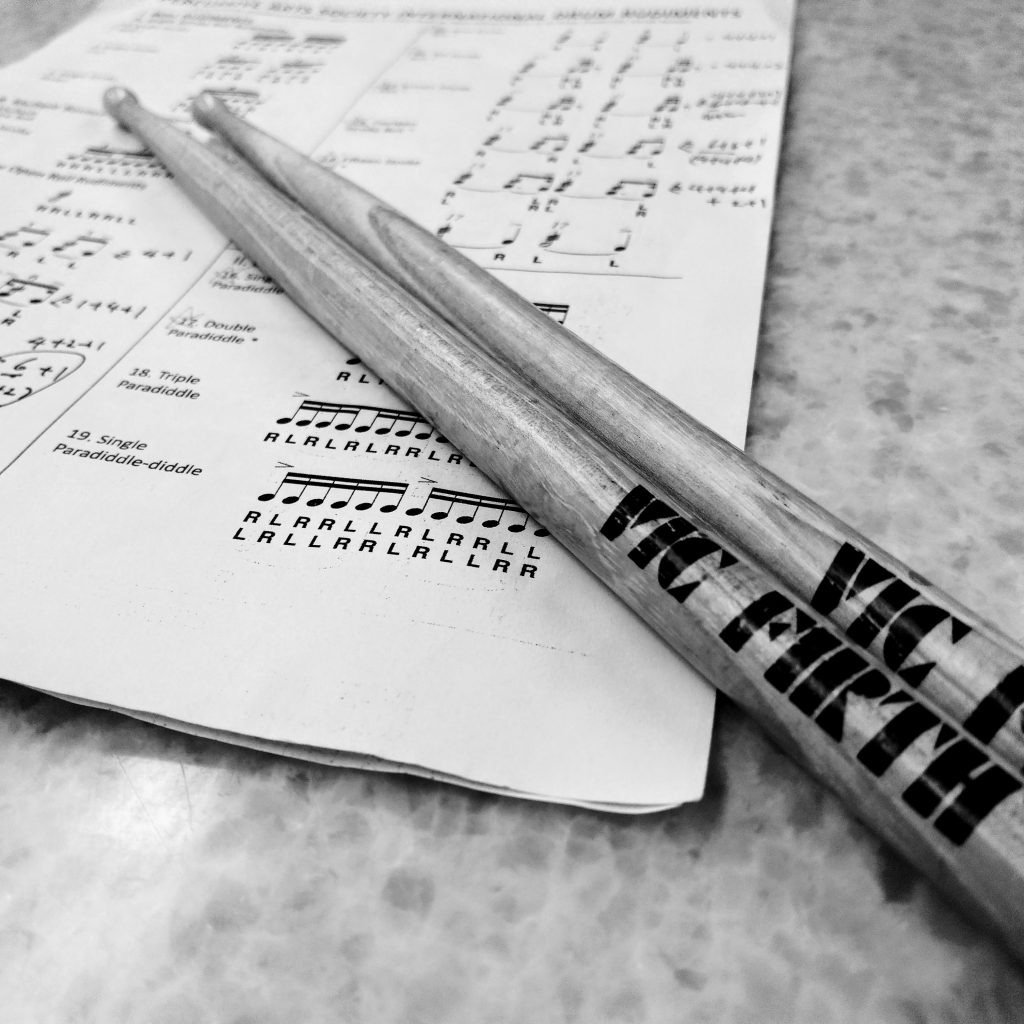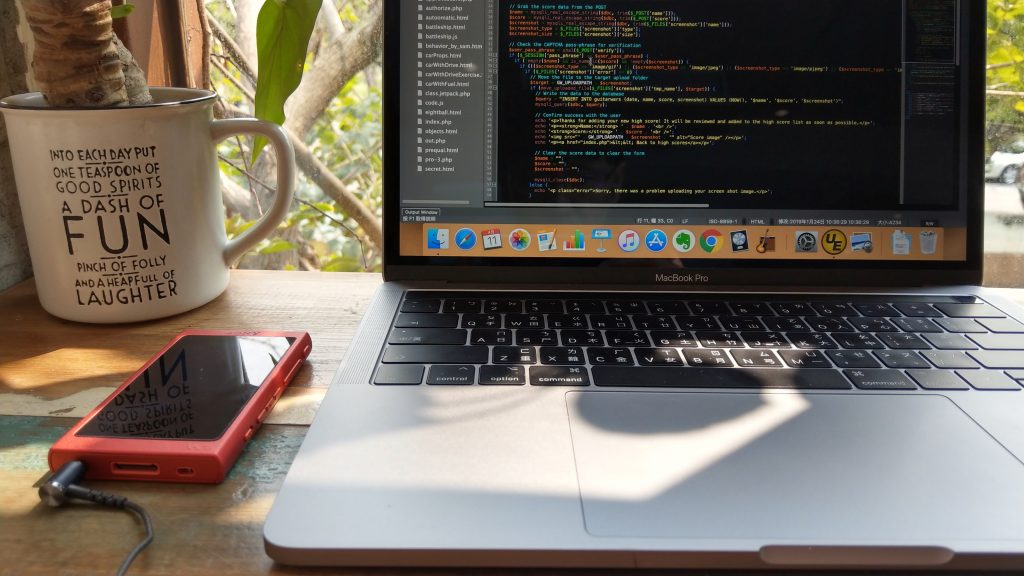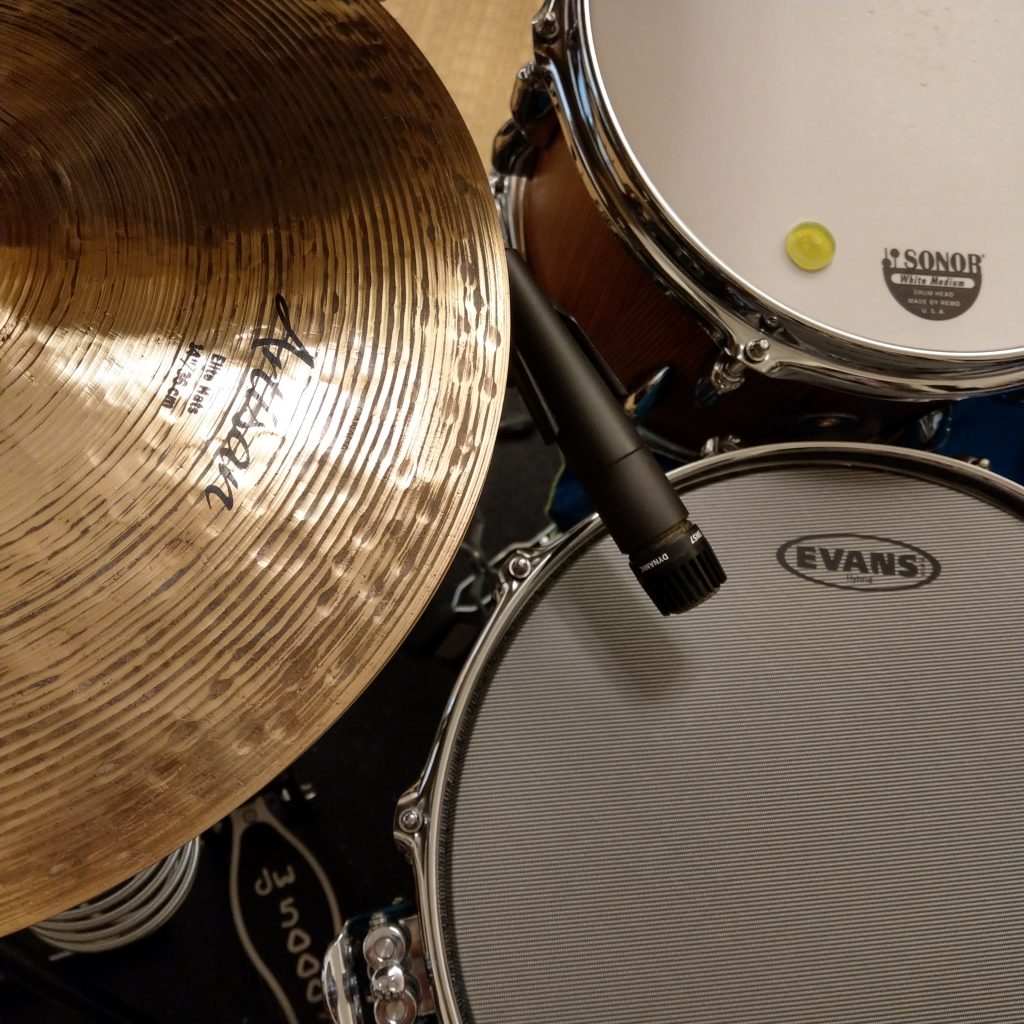A drummer’s must-have textbook, Future Sounds: A Book of Contemporary Drumset Concepts , mentions ‘Balancing the Two Sound Levels’ which emphasizes the importance of dynamic, and how accent and non-accent make a groove so different.
Shifting notes and accents of a groove is called permutation, which is a mathematical concept and is used to develop exercises in the book. When I read the book, I found it was a good way to create a new groove idea. So I started to use ‘permutation’ to compose groove for fun and tried to come up with some innovative licks.
Another method I used very often to be innovative is to pick up a new pair of drumsticks that you’ve never tried before, and make improvisation for fun.

I have a lot of pairs of drumsticks. And all of them have totally different length and diameter. (Most of them are Vic Firth 🙂
I love to try different sticks to improvise sometimes. I find my body is able to sense the change of what I’m holding and give me something in return. My body leads me to somewhere and I simply get new ideas unconsciously.
Remember to videotape yourself when you improvise, so that you can check your performance and make transcription later.
You’ll impress yourself! 🙂


